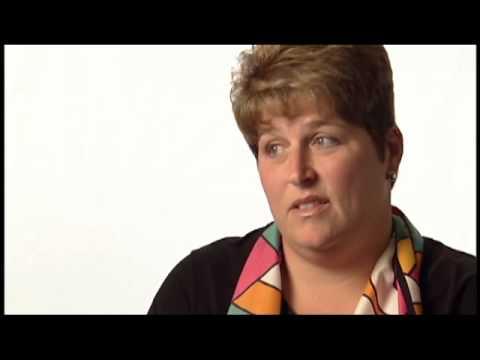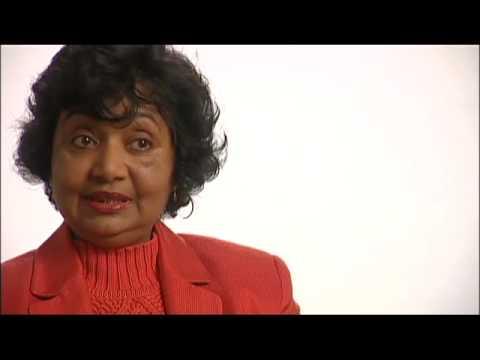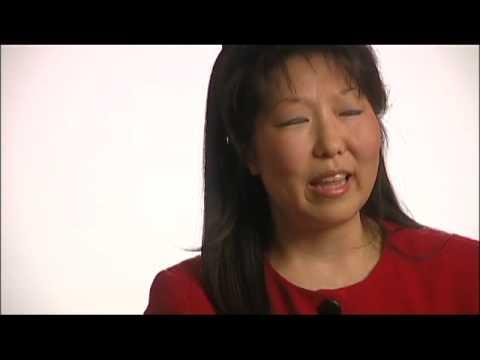Reducing Risk for Cancer
There are no guarantees, but health screenings and some lifestyle changes can help you stay healthy and reduce your risk for cancer. Let your provider know you want to do what is necessary to stay healthy and share what you are doing to be healthy on your own.
Make the most of your health by:
- Taking prescription and preventive medicines.
- Having needed immunizations.
- Getting regular dental checkups and care.
- Getting vision and hearing checked regularly.
- Asking your provider about flu shots and other vaccinations.
- Exercising according to your health care team’s recommendation.
Avoid Known Cancer Risks
It is recommended that you avoid exposure to risk factors such as:
- Exposure to certain chemicals and harmful substances such as benzene, asbestos, nickel and cadmium.
- Environmental exposure to radon gas. People who inhale high levels of radon are at an increased risk for developing lung cancer. Short- and long-term radon tests are available to help you find out whether your home is being exposed to high levels of radon.
- Certain hormone treatments.
- Use of tobacco products, including cigarettes and smokeless tobacco and exposure to tobacco smoke.
- Excessive use of alcohol, especially combined with tobacco use.
- Risk of exposure to viruses, such as HIV and HPV, through unprotected sex.
- Too much alcohol that can increase the risk of cancers of the breast, esophagus, stomach, colon, rectum, liver, pancreas, lung, bladder and kidney.
Be Active and Eat Healthy to Maintain Healthy Weight
Experts say that exercising even three times a week may improve health. Physical activity can reduce stress, increase energy and help maintain a healthy weight. Exercise can range from gentle stretching to a running, cycling or swimming. Even without changing your lifestyle in other ways, you can bring down our risk of cancer by almost 10 percent by maintaining a normal body weight. Being overweight or obese is estimated to be a factor that directly accounts for 14 percent of all cancers in men and 20 percent of all cancers in women.
Being overweight can increase your risk of developing health problems including diabetes, heart disease, stroke and certain cancers. And some research suggests there may be a connection between eating certain types of foods like red meat and certain diseases, including cancer. General recommendations are to reduce fat intake and eat a diet that includes fruits, vegetables, nuts, beans and whole grains. Talk with your health care team or a nutritionist to find out what is best for you.
Diabetes and Cancer
Diabetic patients who maintain excellent control of their diabetes can significantly reduce their risk of developing cancer. However, diabetes that is not well controlled has been found to be a risk factor for cancer. Uncontrolled diabetes is known to increase the risk of pancreatic cancer by as much as 50 percent. Diabetes has also been linked to a 43 percent increase in the relative risk of colon cancer and an 11 percent increase in the relative risk of rectal cancer. Studies have also suggested that uncontrolled diabetes may also be associated with an increased risk of cancers of the breast, liver, kidney and uterus.
If you have diabetes, reduce your risk of developing cancer by effectively managing your diabetes. Talk with your health care team about the best ways to do this for your situation.
Protect Your Skin and Eyes
Exposure to ultraviolet (UV) rays is a known risk factor for the three most common types of skin cancer: basal cell cancer, squamous cell cancer and melanoma. UV radiation can come from sun exposure, sun reflections off surfaces like pavement or snow, sun lamps and tanning beds. UV exposure can damage your skin and eyes, cause early aging and lead to cancer. Fair-skinned people are particularly at increased risk of developing skin cancer from long-term or repeated exposure to ultraviolet rays.
To reduce your risk factors, avoid UV exposure and use sunscreen that blocks both UV-A and UV-B radiations with a sun protective factor (SPF) of at least 15. Most UV damage occurs during the mid-morning to late afternoon hours. Wearing protective clothing and a hat when you are outdoors as well as sunglasses that block 99–100 percent of UV-A and UV-B radiations will help.
X-Rays and CT Scans
The risk of harm from radiation exposure from having diagnostic testing, such as x-rays and CT scans, is generally considered low. In most cases, the benefits of these tests outweigh the risks. However, repeated exposure can cause cancer.
Recent estimates are that up to 2 percent of all cancer cases are directly caused by exposure to medical x-ray tests. It is well-known that exposure to increasing doses of x-rays and undergoing repeated x-ray examinations increases the overall risk of cancer formation.
A CT scan is an imaging method that uses x-rays to create cross-sectional pictures of the internal body. It is estimated that CT scans of the body may cause at least 2 percent of all new cases of cancer. Most CT scans are performed for very important clinical information. However, some CT scans are still being ordered and performed when they may not be necessary. Talk with your health care provider to be certain that CT scans and x-rays are done only when they are medically needed.
Find Out About Screening and Diagnostic Tests
Screening is checking for cancer and for conditions that may lead to cancer in people who do not have symptoms. Screening and diagnostic testing for many cancers has been proven to save lives by detecting precancerous tumors that may lead to cancers and cancers before they spread to other parts of the body. According to the National Cancer Institute (NCI), some types of cancer can be found even before symptoms appear.
Cancer screening can help health care providers find and treat some types of cancer early when cancer treatment may be more effective. Unfortunately, not all types of cancer have screening tests, and some tests are only for people with specific genetic risks. Talk with your provider about the types of screening that may be recommended and beneficial to you. Be sure to ask your health care provider about the potential benefits and risks of any screening or testing procedure.
An excellent summary of cancer screening recommendations has been published online by the American Cancer Society, and the National Cancer Institute also offers recommendations for cancer screening and testing.
Know Your Family Medical History
Keep Track of Your Health Care
- Write down everything you want to ask your health care team. Take notes and keep track of questions between visits.
- Make a list of your medications including vitamins and over-the-counter. Bring this information to the visit along with all of your medication bottles to help the health care team keep track of your medications.
- Take notes during health care appointments.
- Keep all of your health records together and bring this information with you to health care appointments.
- Bring extra copies of important documents to give to appropriate health care team members. You can also fax or mail these before your appointment. Having the health care team read your documents may be an easier way for you to communicate.
- Store pamphlets, information about medication side effects and important phone numbers in your notebook so that everything is in one place.
Certain types of cancer including melanoma, breast, ovarian, prostate and colon cancers may be more common in some families. If a history of cancer exists in your family, your health care provider may suggest genetic testing to check for gene changes. Finding a change does not mean that you will develop cancer. However, it may mean that there is a higher-than-average possibility of developing the disease. The provider may then recommend steps to take to reduce your risk or increase the frequency of screening.
If you do not know about your genetic background, start talking with relatives or friends who know your family’s medical history. In many cases, no one has written down the information. Begin to develop these records for yourself. It may also be helpful to other members of your family.
___
Works Cited
Allen NE, Beral V, Casabonne D, Kan SW, Reeves GK, Brown A, Green J. Moderate Alcohol Intake and Cancer Incidence in Women. J Natl Cancer Inst 2009;101:296-305.
American Cancer Society. Cancer Facts & Figures 2010. Atlanta, Ga: American Cancer Society; 2010. http://www.cancer.org/Research/CancerFactsFigures/index
CDC (Centers for Disease Control and Prevention). Cancer survivorship---United States, 1971--2001. MMWR 2004;53:526--9. http://www.cdc.gov/mmwr/preview/mmwrhtml/mm5324a3.htm
Giordano TP, Henderson L, Landgren O, Chiao EY, Kramer JR, El-Serag, H, Engels EA. Risk of Non-Hodkin Lymphoma and Lymphoproliferative Precursor Diseases among 146,394 Hepatitis C Virus Infected U.S. Veterans, Journal of the American Medical Association, May 8, 2007, 297 (18).
Livestrong. Livestrong Guidebook. ©2004-2011 Lance Armstrong Foundation.
National Cancer Institute. Cancer prevalence statistics: approaches to estimation using cancer registry data. Bethesda, MD: National Cancer Institute; 2010. Available at http://srab.cancer.gov/prevalence/approaches.html . Accessed March 4, 2011.
Perrett, Linda. NCI Benchmarks, Diabetes is the Most Common Risk Factor for Liver Cancer in the U.S,.April 19, 2010. http://benchmarks.cancer.gov/2010/04/diabetes-is-the-most-common-risk-factor-for-liver-cancer-in-the-u-s/
Wascher RA. A Cancer Prevention Guide for the Human Race. Indianapolis, IN: Dog Ear Publishing, 2010. http://acancerpreventionguide.com/author.php
World Cancer Research Fund published Food, Nutrition, Physical Activity and the Prevention of Cancer: a Global Perspective, November 2007. http://www.aicr.org/site/PageServer?pagename=research_science_expert_report









